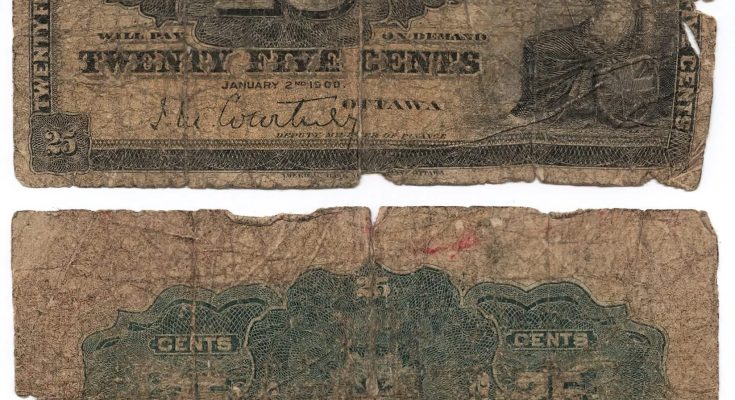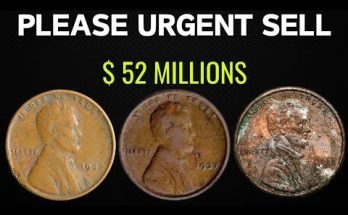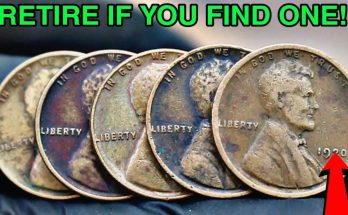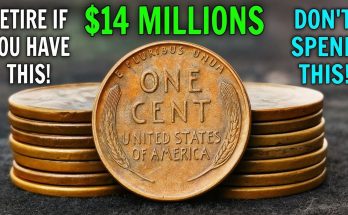In an era when a twenty-five-cent coin is a common sight in our pockets, it’s hard to imagine a time when paper currency was used for such a small denomination. Yet, the Dominion of Canada 25-cent banknote, issued in 1900, is a tangible remnant of a different financial landscape. This fascinating piece of paper currency, often affectionately referred to by collectors as a “shinplaster,” tells a story of economic necessity and the evolution of a nation’s monetary system. Its tattered and worn appearance today speaks to a long and active life in circulation, a silent witness to a turn-of-the-century Canada.
A Response to Economic Need: The Rise of the “Shinplaster”
The practice of issuing small-denomination paper money began out of a very practical need: a chronic shortage of fractional coinage. While the United States first issued these notes during the Civil War, Canada adopted the idea to fill a similar void in its own currency system. The term “shinplaster” itself is said to have originated from a derogatory name given by soldiers who would use the flimsy paper notes to pad their boots, but it eventually became a common, albeit informal, term for any small-value banknote.
Between 1870 and 1923, the Dominion of Canada issued several series of these fractional notes, and the 1900 issue was a critical part of this monetary history. They were a more convenient solution for small transactions than large, heavy bags of coins, and they were essential for daily commerce, helping to keep Canada’s economy running smoothly. The notes were printed by the American Bank Note Company in Ottawa, a well-known name in currency production, and their existence reminds us of a time when the very nature of money was different.
A Closer Look at the 1900 Banknote
The design of the 1900 25-cent note is rich with detail, showcasing the advanced engraving techniques of the era. The front of the note, or the obverse, features the bold, central inscription “The Dominion of Canada” at the top. Below this, the denomination is spelled out in clear, capital letters: “TWENTY FIVE CENTS.” The note also includes the specific date of issue, “January 2, 1900,” and is authorized by the Deputy Minister of Finance, whose signature is prominently displayed. The intricate guilloche patterns and detailed allegorical figures on the note’s borders were not only for aesthetic appeal but also served as a security feature, making the notes more difficult to counterfeit.
The reverse of the note, though simpler, is no less important. It displays a geometric pattern with the denomination “CENTS” and “25” repeated multiple times, both in words and numbers, ensuring that the value was clear from any angle. The wear and tear visible on surviving examples, such as the one in the image, tell a story of their own. The creases, tears, and fading ink are a testament to how often these notes changed hands, serving their purpose in the bustling markets and quiet communities of early 20th-century Canada.
The Value in a Historical Context
For collectors today, the value of a 1900 25-cent banknote is highly dependent on its condition and rarity. While a heavily circulated note like the one pictured, with its tears and faded appearance, might only be worth a few dollars, a perfectly preserved “uncirculated” example can command a much higher price. There are also subtle variations in the notes, such as the signatures of the officials who signed them, which can make certain issues rarer and more valuable than others. Collectors use grading scales to evaluate the condition of these notes, with terms like “Very Fine” and “About Uncirculated” indicating different levels of wear.
Ultimately, the 1900 Dominion of Canada 25-cent banknote represents a significant piece of Canadian financial history. It symbolizes a period of growth and development, when the nation was forging its own monetary identity and adapting to the needs of its citizens. While these notes have long been replaced by durable coins, they remain beloved artifacts for historians and collectors, each one a unique testament to a time when paper was money, even for the smallest of purchases.



